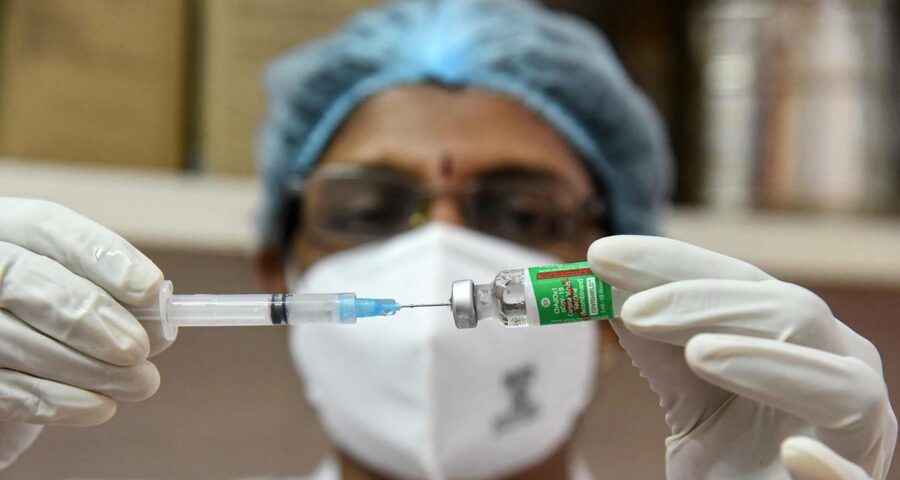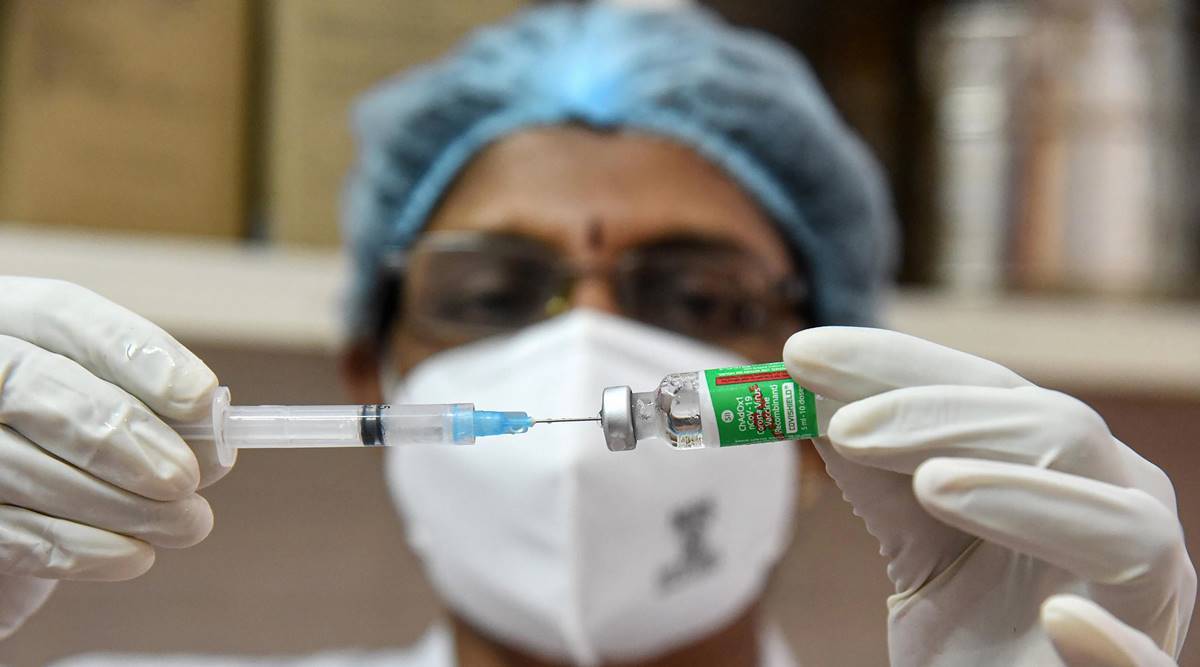Coaxing and counselling push up vaccine figures marginally.
At 10 am, a loudspeaker-mounted van started circling the perimeter of Tivaspada village in Palghar district. A pre-recorded message began: “Government centres are giving vaccine for free. If you are 60 plus or aged 45-59 years with comorbidity, you can get vaccinated. In private centres it is for Rs 250.” If an elderly person peeped out, the van would stop and two medical officers would start counselling.
About 5 km away, Dr Tejasvi Vishnu reached a brick kiln to screen 150 labourers. There she used a different approach, as she tested for diabetes, blood pressure, and checked pregnant women, she built a rapport and urged the elderly to get Covid-19 vaccination.
Contrary to the urban scenario, where queues throng vaccination centres, primary health centres (PHC) bear a deserted look in rural and tribal areas. In Tivaspada, a village of 700 of which 50 tribals are aged above 60 or with comorbidities, none except three health workers had got vaccinated till Thursday when the van drove around. From fear of hospitalisation to loss of daily wage to inability to reach faraway vaccination centres, health officials are hearing various excuses. Some PHCs are holding vaccination twice or thrice a week and still receiving few people.
Maharashtra’s daily case load has climbed beyond 25,000 a day, and health officials have clear instructions to speed up vaccination.
Dr Milind Chavan, Palghar immunisation officer, said they held street plays for 10 days at bus stands, railway stations and crowded junctions to raise awareness. Public service announcements have been conducted in villages for the past 10 days. ASHAs are going door-to-door.
In Tivaspada, medical officer from Malwada PHC Dr Vijay Thakkar and ASHA worker Shanti Satpute got off the van and met 70-year-old Bendi Bhusara, and told her that they got vaccinated and faced no side effects. She replied she would come to the centre. “But I know she won’t. This is not the first time I counselled her,” said Satpute.
She walked to Sangeeta Padvi’s hut, her fifth visit this month. Her father-in-law Kashinath and mother-in-law Yamuna are both aged 70 years. “We are scared of the vaccine,” she said. “What if they put us in institutional quarantine?”
The village had zero Covid-19 cases, but stories from nearby villages have scared the tribals. “Faith in government is limited in these parts,” Satpute explained.
In the next hut, sexagenarian couple Sugra and Samjirao Gavit are keen to get vaccination but have no vehicle to travel 16 km to the nearest vaccination centre in Malwada PHC.
On Friday, Dr Thakkar sent a PHC ambulance to Tivaspada and managed to transport eight villagers to the centre for vaccination. But this is not possible every time. Malwada PHC covers 37 villages. “We have only one ambulance, we can’t send it to all villages. What if an emergency medical case comes up?” Thakkar said they plan to request the gram panchayat to squeeze out funds for travel.
The PHC has vaccinated only 82 villagers since March 1. On March 17, of a target of 100, only 43 turned up.
About 1,000 km from Palghar, in Maharashtra’s eastern end Gadchiroli district faces similar issues. On March 1, when vaccination opened up for senior citizens and comorbid population, Dr Ishan Turkar in Pirimili PHC sat idle the whole day. “Three police officers came but then decided to get vaccinated the next day and left. No villager came,” he said.
In a fortnight, coaxing and counselling has increased turnout to 30-40 vaccinations a day. “During Covid-19 pandemic, tribals were upset that we did not hand over bodies to them for final rites. They lack faith in government. They think the vaccine will make them ill and force hospitalisation,” Turkar said.
Even if counselled, villagers are unable to travel 17-20 km to the nearest centre just for vaccination. “And if they eventually do reach, internet is so slow that it takes hours to register and verify online,” he said.
In rural areas, vaccine officials have become flexible enough to do on-the-spot certification of comorbidity for 45-59 age group. District health officer Dr Shashikant Shambharkar said they plan to increase vaccine centres only if existing ones run to full capacity.
In Nandurbar district, remote hamlets of Dhadgaon and Akkalkuwa have negligible response since villages stretch up to 50 km away. Health officer Dr Nitin Borke said setting up vaccination centres in remote villages is impossible. “There is no internet range there,” he said.
Officials said the Union health ministry has not yet permitted offline vaccination drive, making village visits, on the lines of child immunisation programme, impossible.
Source: Read Full Article


